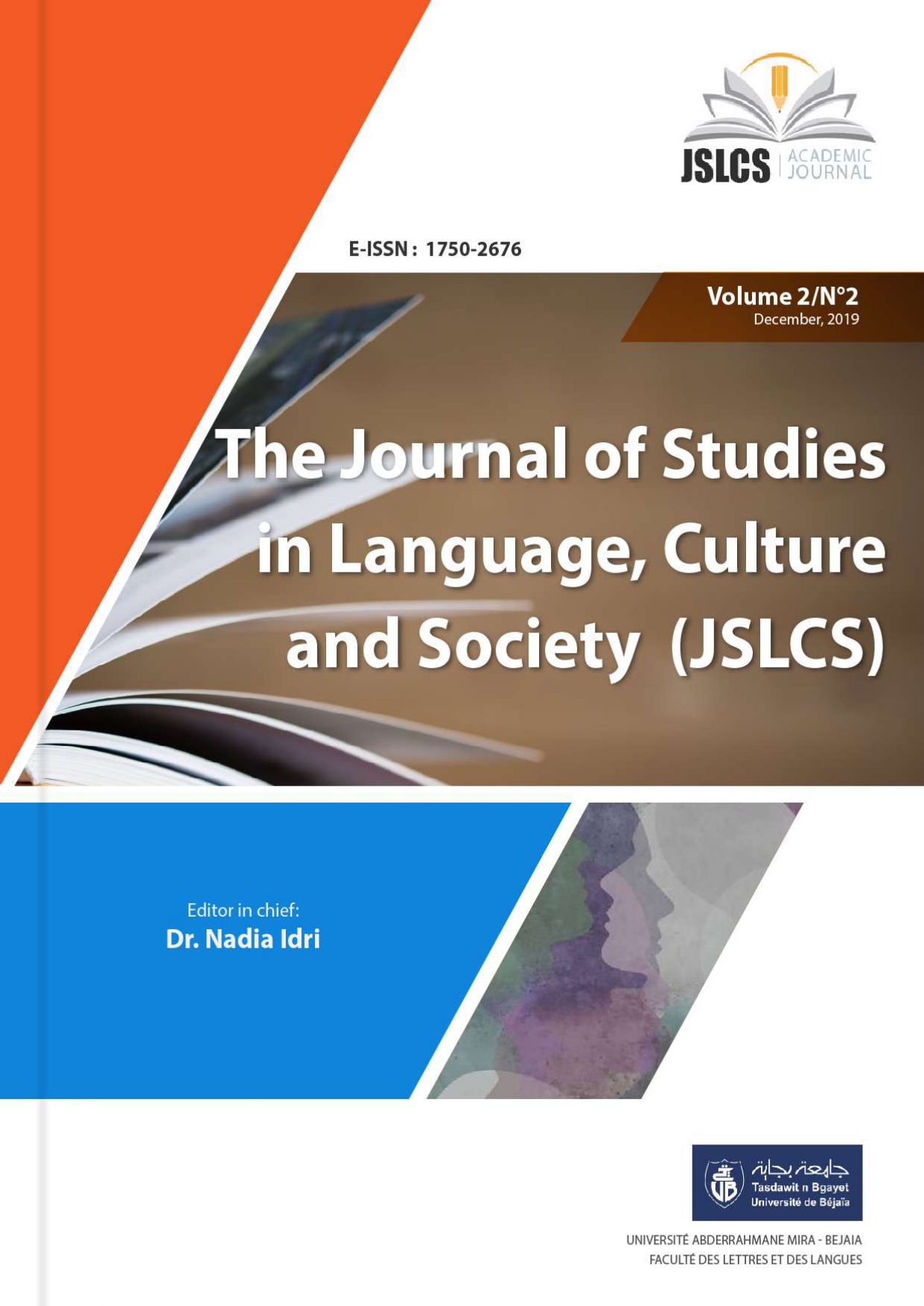A Need-based Evaluation Of An Oral Presentation Course At Bejaia University: Perspectives And Considerations
Keywords:
EFL students, needs analysis, needs-based evaluation, oral course evaluationAbstract
This paper reports on a needs-based study conducted to explore EFL master students‟ academic needs and to examine the adequacy and effectiveness of the oral presentation course in catering to those needs. To this end, a survey questionnaire and a semi-structured interview were conducted with students. The findings suggest that the current course had a number of drawbacks in meeting the learners‟ expectations and needs. The course could be further improved by incorporating relevant materials, increasing the time allotted to the course, and putting more emphasis on the students‟ needs regarding the master thesis oral presentation.
References
- Brick, J. (2012). Teaching English for academic purposes. in A. Burns, & J. C. Richards, The Cambridge guide to pedagogy and practice in second language teaching (pp. 170-178). New York, USA: Cambridge University press.
- Bouguebs, R. (2019). Adopting a Flipped EFL Learning Classroom in Higher Education: Kowledge and Practices. JSLCS, 2(1), 57-68.
- Brooks, G., & Wilson, J. (2014). Using Oral Presentations to Improve Students‟ English Language Skills. Kwansei Gakiun University Humanities Review, 19, 199- 212.
- Chen, H. T. (2005). Practical program evaluation: Assessing and improving planning, implementation and effectiveness. Thousand Oaks, CA: Sage Publications.
- Dudley-Evans, T., & St-John, M. (1998). Developments in English for Specific Purposes: A multidisciplinary approach. Cambridge: Cambridge University Press.
- Graves, K. (1996). Teachers as Course Developers. Cambridge: Cambridge University Press.
- Hamp-Lyons, L. (2001). English for academic purposes. in R. Carter, & D. Nunan, The Cambridge guide to teaching English to speakers of other languages (pp. 121- 134). Cambridge: Cambridge University Press.
- Hutchinson, S., & Waters, A. (1987). English for Specific Purposes: A learning centered approach. Cambridge: Cambridge University Press.
- Hyland, K. (2006). English for Academic Purposes: An advanced resource book. Abingdon, England: Routledge.
- Ibrahim, A. H., & Yusoff, Z. S. (2012). Teaching Public Speaking in a Blended Learning. International Journal of Social Science and Humanity, 2(6), 573- 576.
- Jordan, R. R. (1997). English for Academic Purposes: A guide and resource book for teachers. Cambridge: Cambridge University Press.
- Lee, Y.-J. (2017). Sharing Peer Feedback: How Does It Affect EFL Learners‟ Oral Presentation Skills? Asia-pacific Journal of Multimedia Services Convergent with Art, Humanities, and Sociology, 7(12), 307-322.
- Long, M. H. (2005). Methodological Issues in Learner Needs Analysis. in M. H. Long, Second Language Needs Analysis (pp. 19-76). Cambridge: Cambridge University Press.
- Long, M. H. (2005). Second Language Needs Analysis. Cambridge: Cambridge University Press. 40
- Mika, S. (2006). Peer- and Instructor Assessment of Oral Presentations in Japanese University EFL classrooms: A Pilot Study. Waseda Global Forum(3), 99-107.
- Morita, N. (2002). Discourse Socialization Through Oral Classroom Activities in a
TESL Graduate Program. TESOL Quarterly, 4, 279-311.
- Nation, I., & Macalister, J. (2010). Language Curriculum Development. New York: Routledge.
- Nunan, D. (1988). Syllabus design. Oxford: Oxford University Press.
- Rea-Dickins, P., & Germaine, K. (1992). Evaluation. Oxford: Oxford University Press.
- Richards, J. (1990). The Language-teaching Matrix. Cambridge: Cambridge University.
- Richards, J. C. (2001). Curriculum development in language teaching. Cambridge: Cambridge Language Education.
- Weir, C., & Roberts, J. (1994). Evaluation in ELT. Oxford: Blackwell.








